Products
Products
Light sources
Mini Narrow light sources from BaySpec are designed for use as Raman excitation sources for biomedical, pharmaceutical–PAT, and research applications. The fiber lasers are available in 785- and 1064-nm wavelengths and in card-mount or rack-mount configurations with adjustable gain control and a liquid crystal display.
BaySpec, Inc., Fremont, CA;
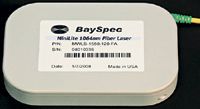
Optical filters
Optical filters designed with sputtered coatings are available from CVI Melles Griot. The narrowband, broadband, and edge filters for fluorescence, microscopy, flow cytometry, and image processing reportedly provide 5–6 OD blocking and maintain a transmission of greater than 98%. According to the company, standard and custom designs are available.
CVI Melles Griot, Carlsbad, CA;
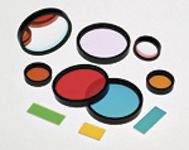
High-voltage power supply
The USBHV Series high-voltage power supply from EMCO High Voltage Corp. is designed for engineers, scientists, and researchers experimenting or designing products requiring high voltage. The power supply can be computer-controlled through a USB interface; control software displays a continuous read-back of the generated high voltage. Units are available with programmable ranges of 0–200 V, 0–500 V, 0–1000 V, 0–1250 V, and 0–2000 V at 1 W of output power.
EMCO High Voltage Corp., Sutter Creek, CA;
www.emcohighvoltage.com/USB.htm
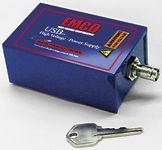
ICP liquid flow monitor
The TruFlo device from Glass Expansion measures and digitally displays the sample flow rate to an ICP-OES or ICP-MS nebulizer. According to the company, the flow monitor can be programmed to sound an alarm when the flow deviates from specified rates. The device reportedly also can provide an electronic record of sample flow rate for regulatory compliance.
Glass Expansion, Pocasset, MA;
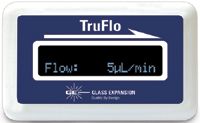
Soft X-ray and extreme-UV spectrometer
McPherson's model 251MX spectrometer for soft X-ray and extreme-UV spectral characterization is designed for applications such as soft X-ray plasma diagnostics, analysis of high-order harmonic generated coherent extreme-UV lasers, characterization of extreme-UV sources for high resolution imaging, and fabrication or advanced semiconductor lithography processes. The stand-alone spectrometer can be used for wavelength dispersive spectral measurements from 0.6 to 20 nm (60–2000 eV).
McPherson, Inc., Chelmsford, MA;
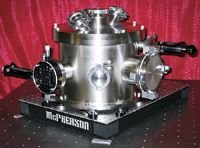
NMR accessories catalog
A 35-page catalog from New Era Enterprises describes NMR sample tubes and accessories. The catalog lists products ranging from microtubes to 30-mm cells for imaging. Other products include specialty tubes for air and moisture-sensitive samples, a gel apparatus for RDC measurements, and sampling accessories such as pipets, tube washers, and caps.
New Era Enterprises, Vineland, NJ;
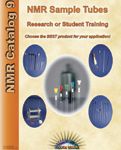
Mercury analyzer
The model RA-3420 Gold+AFS mercury analyzer from Nippon Instruments is designed for analysis according to EPA Method 1631E. Samples are automatically digested and oxidized followed by automated cold vapor atomic fluorescence spectroscopy analysis. According to the company, the analysis is performed without user intervention.
Nippon Instruments North America, College Station, TX;

ATR accessory
The GladiATR Vision attenuated total reflection device is designed to couple small-area infrared analysis with simultaneous viewing. According to the company, the device's diamond crystal enables analysis of thick or nontransparent samples. The accessory reportedly is compatible with most FT-IR spectrometers.
Pike Technologies, Madison, WI;
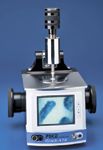
MS ion source
The 2-D Omni Spray ion source from Prosolia is based on desorption electrospray ionization and is designed for surface analysis with rapid sampling and high throughput. The ion source's software enables control through a graphical user interface. The ion source reportedly holds up to three Omni Slides or one Omni Slide-96. According to the company, the source is compatible with Thermo and Sciex mass spectrometers.
Prosolia, Indianapolis, IN;

Raman imaging system
Renishaw's StreamLine Plus Raman imaging system is designed for fast chemical imaging with readout times as short as 6 ms per spectrum. According to the company, an image of an entire tablet can be collected in less than 4 min. The system includes a high-speed encoded stage, a CCD detector, and WiRE 3.1 software. Experiments can be queued and chemical images can be viewed and manipulated during acquisition.
Renishaw, Inc., Hoffman Estates, IL;
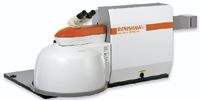
AA spectrophotometers
The AA-7000 Series atomic absorption spectrophotometers from Shimadzu are designed with a 3-D optical system for flame and furnace analysis. According to the company, the instruments achieve flame detection of Pb at 0.015 ppm and furnace detection of Pb at 0.00005 ppm. The spectrophotometers combine the flame and furnace system mounts in the same compartment. Safety features include a vibration sensor that extinguishes flames automatically, a multimode automatic gas leak check, automatic air–nitrous oxide switching, and an argon gas pressure monitor.
Shimadzu Scientific Instruments, Columbia, MD;

UV–vis spectrophotometer
Shimadzu Scientific Instruments' BioSpec-nano UV–vis spectrophotometer is designed for the quantitation of nucleic acids. The spectrophotometer reportedly requires only 1 μL of sample with a pathlength of 0.2 mm or 2 μL with a pathlength of 0.7 mm. According to the company, for ultrasmall sample volumes no standard rectangular cell is needed, but a rectangular cell adapter is available. Sample measurement time is 3 s. Application areas include genomics, molecular biology, agriculture, medical science, and food quality.
Shimadzu Scientific Instruments, Columbia, MD;
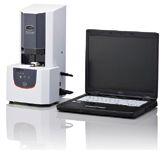
Calibration standards
Calibration standards ICAL-4 and ICAL-5 for ILMO.5.2 and ILMO.5.3 are available from SPEX CertiPrep. The products can be used separate or combined with other ICAL standards from the company. A standards kit is available comprising standards ICV-3 and PLSB7-2X for ILMO.5.2 and ILMO.5.3. The company recommends a dilution of 100-fold for these products. Custom standards are available.
SPEX CertiPrep, Inc., Metuchen, NJ;
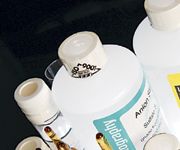
Mercury analyzer
The Hydra IIAA automated mercury analyzer from Teledyne Leeman Labs is designed to provide 1 ppt detection limits and fast sample throughput. The instrument includes a 270-position autosampler. According to the company, the instrument's software automates the analytical process from method development to final report generation. The analyzer reportedly can be upgraded to perform direct solids analysis.
Teledyne Leeman Labs, Hudson, NH;
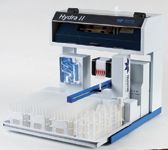
TOF detector
The UltraFast BiPolar TOF detector from PHOTONIS reportedly exhibits a temporal resolution of 750 ps. According to the company, field tests show a near twofold increase in mass resolution. The company offers 18 models ranging from 8 mm to 40 mm in diameter.
PHOTONIS USA, Inc., Sturbridge, MA;
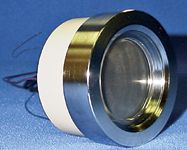
Laboratory press
The model 3635 X-press laboratory press is designed for repetitive pressing of sample pellets for XRF and other analytical methods. The automated, programmable 35-ton press features an LCD touch-screen interface with adjustable parameters such as maximum pressure, dwell time, and release time. According to the company, a pressing cycle can be saved in the system's memory and initiated with one touch. The press includes a safety door with an interlock that prevents opening of the shield during operation.
SPEX SamplePrep, Metuchen, NJ;
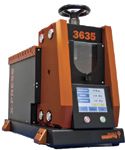
MS system
The micrOTOF API-TOF MS system from Bruker Daltonics is designed to provide a resolution of greater than 16,500 and a mass accuracy of 1–2 ppm. According to the company, the system can be equipped with a GC–atmospheric pressure chemical ionization interface to allow GC–TOF-MS analysis on the same instrument. The combination reportedly allows interchange between LC and GC operation in a few minutes without tools.
Bruker Daltonics, Billerica, MA;

XRF spectrometer
The M1 MISTRAL tabletop microanalysis X-ray fluorescence spectrometer from Bruker AXS is designed for nondestructive analysis of gold and other precious metals. The instrument's sample stage allows the analysis of irregularly shaped objects as large as 10 cm × 10 cm × 10 cm. The spectrometer includes an integrated video microscope with a cross-hair function for sample positioning. According to the company, elemental compositions are provided in less than 1 min of measurement time.
Bruker AXS, Madison, WI;
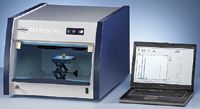
ICP-AES method development
HORIBA Scientific's CLIP (collection of line intensity profiles) is designed to assist analysts in the development of methods for high-resolution sequential ICP–atomic emission spectroscopy. According to the company, the profile of each line is calculated according to the instrument's configuration, including focal length, slit combination, diffraction grating, and order used. The product is available as an upgrade module for the company's ULTIMA instrument.
HORIBA Scientific, Edison, NJ;

Fluorescence lifetime system
The TemPro fluorescence lifetime system from HORIBA Scientific uses time-correlated single photon counting for fluorescence measurements. The desktop instrument reportedly is capable of measuring lifetimes ranging from picoseconds to seconds. The instrument includes interchangeable pulsed laser diode and LED light sources that cover discrete emission wavelengths from 255 nm to near IR. Options include light sources, polarizers, and detection out to 850 nm.
HORIBA Scientific, Edison, NJ;
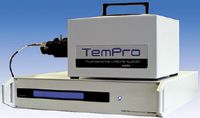
Raman microscope
HORIBA Scientific's XploRA Raman microscope is designed to combine microscopy and chemical analysis for use in R&D, QA/QC, and forensic laboratories. According to the company, the instrument performs nondestructive analysis at atmospheric conditions with no sample preparation. Software modules include a Guided Operation wizard.
HORIBA Scientific, Edison, NJ;
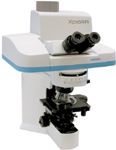
GC–MS system
LECO's TruTOF HT GC–MS system is designed to provide continuous full-range mass acquisition rates as high as 80 spectra/s. According to the company, the instrument also provides fully integrated EPA reporting functionality. Electron and chemical ionization sources are available.
LECO, St. Joseph, MI;

Nitrogen–sulfur–chlorine analyzer
Thermo Fisher Scientific's TITAN 4000 Total Nitrogen/Sulfur/Chlorine analyzer is designed for refinery and petrochemical applications. According to the company, the instrument's working range extends from parts-per-billion to parts-per-million concentrations. Potential samples include naphtha, aromatics, automotive fuels, biodiesel fuels, and gaseous and liquid propane gas. Analysis times reportedly are 2 min for total nitrogen and sulfur and less than 4 min for total chlorine.
Thermo Fisher Scientific, Madison, WI;
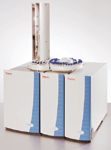
Silicon drift detector
The XR-100SDD Silicon Drift Detector (SDD) from Amptek reportedly enables extremely high count rate applications with high energy resolution. According to the company, the product is designed for XRF applications from OEM handheld instruments to benchtop analyzers.
Amptek, Inc., Bedford, MA;

Fluorescence measurement system
Hitachi's Quantum Yield measurement system for the company's model F-7000 fluorescence spectrophotometer is designed for fast measurements and calculations of internal and external QY, absorption, absorption amount, and fluorescent amount of powder samples. The system includes the accessories required for spectral correction and quantum yield measurements in the range of 240–800 nm.
Hitachi High Technologies America, Inc., Pleasanton, CA;
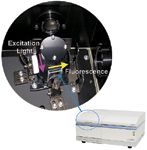
Portable Raman instrument
The portable EZRaman-I instrument from Enwave is designed to provide approximately 50 times better sensitivity than most other portable Raman instruments. According to the company, the instrument's spectral resolution is approximately 6 cm–1 and its spectral range is 100–2000 cm–1 .
Enwave Optronics, Inc., Irvine, CA;
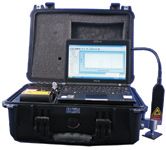
XRF inorganic elemental analyzer
EDAX's Orbis micro-XRF inorganic elemental analyzer is designed to perform nondestructive measurements that require minimal sample preparation and provide improved sensitivity over SEM and EDS methods. The analyzer includes a motorized turret for coaxial sample view and X-ray analysis. Primary beam filters can be used with X-ray optics for micrometer to millimeter spot elemental analyses. Applications include forensics, materials analysis, failure analysis, and elemental imaging.
EDAX Inc., Mahwah, NJ;
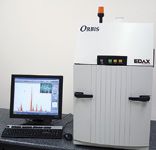
Circular dichroism spectrometer
The model J-815 circular dichroism spectrometer from JASCO measures circular dichroism, absorbance, and fluorescence versus wavelength and temperature. The instrument can analyze as many as six samples at a time.
JASCO, Easton, MD;
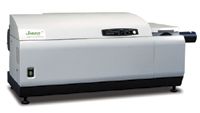
Database
ICDD's PDF-4/Organics 2009 database contains 370,844 entries and is designed for rapid materials identification. According to the company, the database can be used for formulation analysis, drug and tablet stability, and identification of polymorphs, excipients, and drugs. Other possible applications include the identification or fingerprinting of crystalline and noncrystalline phases. The database reportedly was produced by combining drug active compounds with polymers, common inorganic salts, excipients, and pharmaceuticals.
ICDD, Newtown Square, PA;

FT-IR software
The new ChemID software from Smiths Detection is designed for use with the IdentifyIR miniaturized FT-IR analysis system. According to the company, the software allows the user to easily search library databases for sample identification, while modules within the software allow peak picking and functional group analysis of the sample.
Smiths Detection Scientific, Danbury, CT;
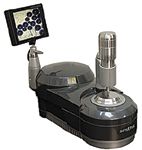
NIR miniprobes
Specac's Prospect fiber-optic transmission probes are designed for NIR process applications. Constructed of stainless steel and using gold/nickel bonding with sapphire windows, the probes are reportedly capable of operation at temperatures as high as 250 °C and pressures as high as 100 bar. The probes are available with pathlengths of 1, 2, and 5 mm with probe lengths of 100, 200, and 500 mm.
Specac Inc., Woodstock, GA;
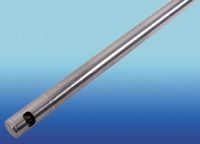
FT-IR spectrometers
ABB Analytical's general-purpose laboratory Fourier-transform IR spectrometers are designed for ease of use, reliability, and constant results. Two versions are available: the MB3000 system is for analyses in the mid-IR range, and the MB3600 system is for near-IR analyses. The company's Horizon MB FT-IR software can be used with the spectrometers to facilitate data acquisition, processing, and sample analysis.
ABB Analytical, Quebec, Canada;

Cryogenic grinding mill
The CryoMill from Retsch is designed for cryogenic grinding. The mill is continually cooled with liquid nitrogen from an integrated cooling system before and during the grinding process. Grinding parameters can be stored, and LEDs in the display indicate the current state of operation. The mill has a vibrational frequency of 25 Hz. Samples mainly are ground by impact but are also ground by friction, which reportedly provides finer grind sizes. The mill includes one grinding station for grinding jar volumes of 25, 35, and 50 mL. An optional adapter holds as many as four 5-mL grinding jars.
Retsch, Inc., Newtown, PA;
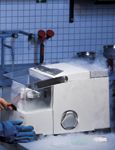
ICP-MS cones
Type A and B Nickel Sampler and Skimmer cones for Nu Instruments Plasma ICP-MS systems are available from Spectron, Inc.
Spectron, Inc., Ventura, CA;
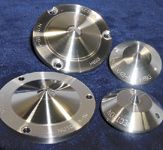
Demountable ICP torch
A demountable torch from Glass Expansion is designed for use with ICP spectrometers. According to the company, the standard quartz outer tubes can be replaced when worn and the ceramic outer tubes can withstand harsh conditions. The torch is available for ICP-OES and ICP-MS systems from PerkinElmer, Spectro, and Thermo Fisher Scientific.
Glass Expansion, Pocasset, MA;
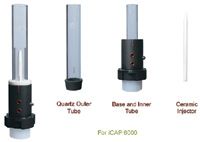
Handheld FT-IR system
A2 Technologies' Exoscan handheld FT-IR system is designed for applications in which analyzing the condition of a surface is critical, including nondestructive surface testing and molecular analysis of advanced composites and metals.
A2 Technologies, Danbury, CT;
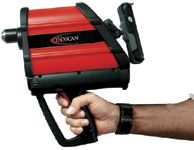
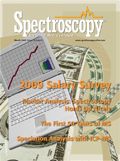
LIBS Illuminates the Hidden Health Risks of Indoor Welding and Soldering
April 23rd 2025A new dual-spectroscopy approach reveals real-time pollution threats in indoor workspaces. Chinese researchers have pioneered the use of laser-induced breakdown spectroscopy (LIBS) and aerosol mass spectrometry to uncover and monitor harmful heavy metal and dust emissions from soldering and welding in real-time. These complementary tools offer a fast, accurate means to evaluate air quality threats in industrial and indoor environments—where people spend most of their time.
NIR Spectroscopy Explored as Sustainable Approach to Detecting Bovine Mastitis
April 23rd 2025A new study published in Applied Food Research demonstrates that near-infrared spectroscopy (NIRS) can effectively detect subclinical bovine mastitis in milk, offering a fast, non-invasive method to guide targeted antibiotic treatment and support sustainable dairy practices.